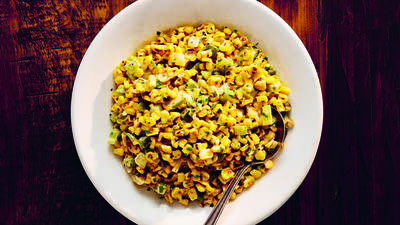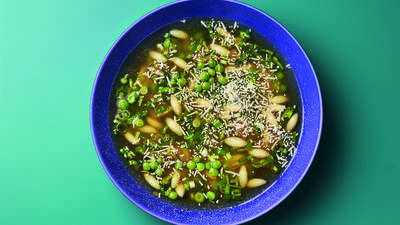
Ken Hom is a master teacher who has written reams on Chinese cooking, including the Complete Chinese Cookbook. He recently took a 5,000-mile trek with the BBC for the special Eat, Drink, Cook China. Hom describes the distinctive foods of China's regions.
The North
 Complete Chinese Cookbook
Complete Chinese Cookbook
The north is a wheat-growing area -- Beijing is very typical. It's rather stodgy, heavy food -- a lot of buns and types of bread-like things -- but it's still very good. They're also famous for different types of dumplings. That kind of northern food comes from an area which is quite cold -- you have all the winds that come from Siberia that cut through the Gobi desert and go directly to Beijing, which has snow. The food has to be really, really hearty.
You see what they call baozi, which is filled with meat, mostly pork, and vegetables. It's actually like a sandwich that's been steamed and has chopped meats inside of it with cabbage. What you see a lot in Beijing is cabbage, cabbage, cabbage -- a lot of cabbage dishes stir-fried with shrimp.
The Southwest
The southwest is really the heart of the country. Sichuan is very, very famous for what we call mala, which is hot and numbing food. For the first time I understood why you need Sichuan peppercorn, which is very fresh and numbing, and lots of spices.
Why? Because it's so cold and damp there. What happens is when you eat this kind of food, it really warms you up. In the summer you're supposed to eat the same kind of food, and it makes you sweat, so it cools you off.
Of course you have things like the very famous mapo doufu, which is tofu braised with this incendiary sauce. They don't just add a little bit of chili and Sichuan peppercorn, they add handfuls of it in every dish. Boy, you're flying -- I mean it's like a legal drug. That is very characteristic of Sichuan.
 Hom's recipe: Stir-fried Minced Pork
Hom's recipe: Stir-fried Minced Pork
The South
The south, which is where my ancestors come from, has what many Americans know as Cantonese cooking. Real Cantonese cooking is just amazing because everything is about freshness -- it's about the wok being hot, it's about ingredients that you pluck from your garden and cook with a minimum amount of cooking so that freshness can come out -- and of course seafood.
Because it's so warm, we can grow three crops of rice a year. You see rice fields everywhere, it's how you picture China when you go, especially in the south.
The East
Then you have the eastern region -- Shanghai, Fujian -- that's bordering that whole area around the China seas. That's all seafood. That kind of food is just wonderful. A lot of braised things, lots of tea culture as well.
 Hom's recipe: Rainbow Beef in Lettuce Cups
Hom's recipe: Rainbow Beef in Lettuce Cups
I think China is so diverse that when you go there, you really realize not only what an ancient country it is, but how vast it is. It's just mind-boggling.
Related: Andy Ricker on the four regions of Thai food
Before you go...
Each week, The Splendid Table brings you stories that expand your world view, inspire you to try something new, and show how food connects us all. We rely on your generous support. For as little as $5 a month, you can have a lasting impact on The Splendid Table. And, when you donate, you’ll join a community of like-minded individuals who love good food, good conversation, and kitchen companionship. Show your love for The Splendid Table with a gift today.
Thank you for your support.
Donate today for as little as $5.00 a month. Your gift only takes a few minutes and has a lasting impact on The Splendid Table and you'll be welcomed into The Splendid Table Co-op.



